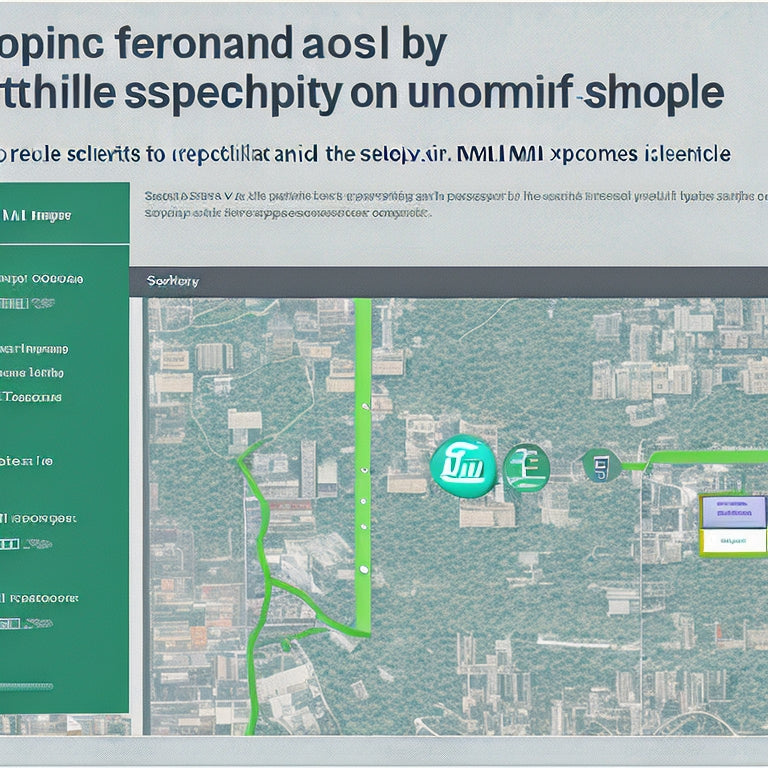
How Do I Upload a Sitemap XML to Shopify
Share
This article examines the process of uploading a sitemap XML to the Shopify platform.
The objective of this technical guide is to provide a step-by-step explanation of the benefits of utilizing a sitemap XML, along with tips for successfully uploading it to Shopify.
The information presented in this article is intended to cater to an audience seeking knowledge and technical precision in the realm of e-commerce and website optimization.
Additionally, this article will direct readers to further resources for enhancing their understanding of sitemap XML implementation on Shopify.
- Uploading a sitemap XML to Shopify can improve search rankings by providing a comprehensive map of the website's structure and content.
- It enhances website visibility by ensuring all pages are indexed and easily accessible to search engine crawlers.
- Uploading a sitemap XML can boost organic traffic by facilitating faster indexing and discovery of new pages or updates.
- It contributes to a better user experience by helping visitors navigate the site more efficiently.
Benefits of Sitemap XML
The implementation of a Sitemap XML can bring numerous benefits to a website.
Firstly, it can significantly improve search rankings by providing search engines with a comprehensive map of the website's structure and content.
Secondly, it enhances website visibility by ensuring that all pages are indexed and easily accessible to search engine crawlers.
Lastly, a Sitemap XML can boost organic traffic by facilitating a faster indexing process, allowing new pages or updates to be discovered and ranked more quickly.
Additionally, it contributes to a better user experience by helping visitors navigate through the site more efficiently.
Improve Search Rankings
To improve search rankings, optimizing the sitemap XML and ensuring its correct upload to the Shopify platform is crucial.
A properly optimized sitemap XML can significantly enhance website performance and contribute to higher search engine visibility. By including all relevant URLs and organizing them in a hierarchical structure, search engine crawlers can efficiently navigate and index the website's content. This enables search engines to understand the website's structure, prioritize important pages, and rank them accordingly.
Furthermore, optimizing website content, such as meta tags, headings, and keywords, can further enhance search rankings. By using relevant and targeted keywords, search engines can better understand the website's content and relevance to user search queries.
Therefore, optimizing the sitemap XML and website content are essential strategies for improving search rankings and driving organic traffic to the website.
Enhance Website Visibility
Enhancing website visibility requires implementing effective strategies that optimize the organization and structure of URLs, as well as improving the content's relevance to user search queries. Website optimization is a crucial aspect of improving search engine rankings and attracting organic traffic.
To achieve this, various SEO strategies can be applied. Firstly, optimizing URL structure involves creating descriptive and concise URLs that include relevant keywords. This allows search engines and users to easily understand the content of the page.
Additionally, improving the content's relevance to user search queries involves conducting keyword research to identify popular and relevant keywords, and then integrating them naturally into the website's content. This ensures that the website appears in search results when users enter relevant queries.
Boost Organic Traffic
Implementing effective strategies to boost organic traffic involves optimizing website content and structure, as well as conducting thorough keyword research to identify popular and relevant keywords.
To increase conversions and optimize SEO, it is crucial to create high-quality, informative, and engaging content that aligns with the target audience's needs and preferences. This can be achieved by incorporating the identified keywords naturally within the content, headings, and meta tags.
Additionally, optimizing the website's structure includes improving page load speed, ensuring mobile responsiveness, and implementing proper URL structure. By adhering to these practices, search engines can easily crawl and index the website, improving its visibility and organic ranking.
Furthermore, it is essential to regularly monitor and analyze website traffic using tools like Google Analytics to identify areas for improvement and adjust strategies accordingly.
Faster Indexing Process
The faster indexing process can be achieved by optimizing website structure and regularly monitoring website traffic.
Optimizing the website structure involves ensuring that it is well-organized, with clear navigation and relevant content. This allows search engine crawlers to easily navigate and index the website's pages.
Regularly monitoring website traffic helps to identify any issues that may be hindering the indexing process, such as slow loading times or broken links. By addressing these issues promptly, website owners can ensure that their pages are crawled and indexed more efficiently.
Additionally, it is important to regularly update and submit a sitemap.xml file to search engines, as this provides a comprehensive list of all the pages on the website, making it easier for search engine crawlers to find and index them.
Better User Experience
To improve the user experience, website owners can focus on optimizing page load speeds and ensuring intuitive navigation.
Improving navigation is crucial as it allows users to easily find the information they are looking for, ultimately enhancing user engagement. One way to achieve this is by implementing a clear and logical menu structure that organizes content in a hierarchical manner.
Additionally, incorporating features such as search bars and breadcrumbs can further enhance navigation, enabling users to quickly locate specific pages or retrace their steps.
Website owners should also consider implementing responsive design principles to ensure that their site is accessible and functional across different devices.
Tips for Uploading a Sitemap XML to Shopify
This discussion will focus on key points related to uploading a sitemap XML to Shopify.
Specifically, we will cover:
- The recommended format and structure of the sitemap.
- How to access Shopify's backend to upload the XML file.
- The process of verifying the successful submission of the sitemap.
These topics will be discussed in a knowledgeable, technical manner to provide precise instructions for users looking to upload a sitemap XML to Shopify.
Sitemap Format and Structure
Regarding sitemap format and structure, it is important to ensure that the XML file follows the specified guidelines and adheres to the required elements and tags.
Proper sitemap creation is crucial for search engine optimization (SEO) purposes, as it helps search engines effectively crawl and index a website's pages.
The sitemap should include all relevant URLs and provide additional information, such as the last modified date and the frequency of updates.
Additionally, the sitemap should be organized in a hierarchical structure, with the homepage as the starting point and the different sections and pages branching out accordingly.
This helps search engines understand the website's structure and navigate it more efficiently.
Accessing Shopify's Backend
Accessing the backend of Shopify involves navigating to the appropriate section of the website where the necessary administrative tools and settings are located. This backend provides users with access to a variety of features and functionalities that are essential for managing their online store.
Within the backend, users can access and manage various aspects of their store settings, such as inventory management, product listings, customer orders, and payment processing. Additionally, users can access backend data, which includes valuable information about their store's performance, sales analytics, and customer behavior.
The backend also allows users to customize their store's appearance and layout, set up marketing campaigns, and manage customer relationships.
Overall, accessing Shopify's backend is crucial for efficiently managing store settings and optimizing the online shopping experience for customers.
Uploading the XML File
Uploading the XML file involves transferring a structured data document that conforms to the XML format to the designated location within the platform, facilitating efficient communication and data exchange between the website and search engines.
The uploading process is a crucial step in ensuring that search engines can effectively crawl and index the website's content. Common mistakes in the uploading process can prevent the sitemap from being properly recognized by search engines, leading to indexing issues and poor visibility in search results.
Some common mistakes include uploading an improperly formatted XML file, neglecting to submit the sitemap to search engines, or failing to update the sitemap when changes are made to the website's structure or content.
It is important to carefully follow the guidelines provided by the platform and search engines to avoid these common mistakes and optimize the website's visibility.
Verifying Sitemap Submission
Verifying the submission of a sitemap is an essential step in ensuring that search engines properly recognize and index a website's content. Once a sitemap has been submitted, it is important to confirm that it has been successfully received by the search engine.
Verification can be done through various methods, depending on the search engine being used. One common approach is to check the search engine's webmaster tools or search console, where a section dedicated to sitemaps can be found. Here, website owners can view the status of their submitted sitemap and any potential errors that may have occurred during the submission process.
Troubleshooting sitemap errors is crucial in addressing any issues that may prevent search engines from properly indexing the website's content. By regularly verifying the submission of the sitemap and addressing any errors, website owners can ensure that their website is being effectively recognized and indexed by search engines.
Helpful Tutorials for Sitemap XML
One valuable resource for learning about sitemap XML and how to effectively utilize it on the Shopify platform is the official Shopify Help Center. The Help Center provides comprehensive tutorials and guides that cater to the technical needs of users.
These tutorials cover various aspects related to sitemap XML, including common errors that may occur during its creation, submission, or updating process. It emphasizes the importance of regularly updating the sitemap to ensure that search engines are aware of the latest content on the website.
Learn More: Resources for Sitemap XML on Shopify
In order to effectively upload a sitemap XML to Shopify, it is important to have access to appropriate resources that provide guidance and tips. Fortunately, there are several resources available that can assist with this process.
One valuable resource is the Shopify Help Center, which offers comprehensive articles and tutorials on various aspects of website management, including sitemap XML uploading.
Additionally, the Shopify Community Forums provide a platform for users to ask questions, share experiences, and receive advice from other members of the Shopify community. These forums can be a valuable source of information and tips for successfully uploading a sitemap XML.
Furthermore, there are various online tutorials and guides available that provide step-by-step instructions and best practices for uploading a sitemap XML to Shopify.
Frequently Asked Questions
What Is the Purpose of a Sitemap XML on Shopify?
The purpose of a sitemap XML on Shopify is to improve the visibility and accessibility of a website's pages to search engines. It plays a crucial role in optimizing SEO by providing a structured map of the website's content.
Can I Use a Third-Party App to Generate a Sitemap XML for My Shopify Store?
Using a third-party sitemap generator for Shopify can be beneficial for SEO purposes. It allows for the creation of an XML sitemap, which helps search engines crawl and index website pages efficiently.
How Often Should I Update My Sitemap XML on Shopify?
To optimize the sitemap XML on Shopify, it is important to follow best practices for updating it. Regularly updating the sitemap XML ensures that search engines can accurately index the website's pages, improving visibility and search engine rankings.
Does Shopify Automatically Generate a Sitemap XML for My Store?
Shopify automatically generates a sitemap XML for stores, enabling benefits such as improved website crawlability and indexation by search engines. Optimizing the sitemap XML for better SEO involves ensuring its accuracy, including relevant pages, and regularly updating it.
Can I Submit My Sitemap XML to Search Engines Other Than Google?
Submitting a sitemap XML to alternative search engines, besides Google, is possible. This allows website owners to ensure their site is indexed and accessible to a wider audience, increasing visibility and potential traffic.
Related Posts
-
7 Best Digital Solutions for Online Store Pain Points
You're likely wasting time and resources on manual inventory management, slow website loading, and inefficient order ...
-

How Do I Enable TikTok Integration on My Shopify Store
The integration of TikTok on Shopify stores has gained attention due to its potential benefits for businesses. This ...
-

Streamlining Your Shopify Store for Long-Term Reliability With Automation
The implementation of automation in Shopify stores has emerged as a significant strategy for businesses seeking to o...

